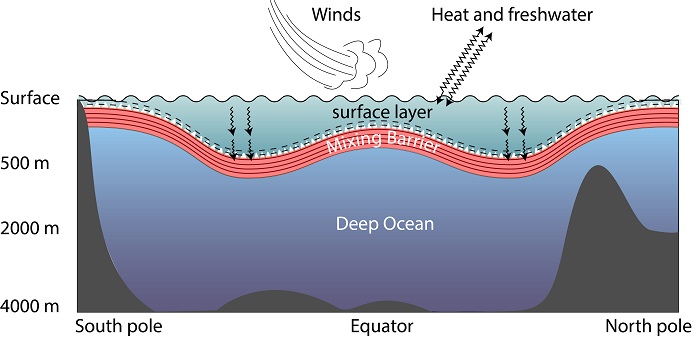
Climate change has reduced ocean mixing far more than expected
The ocean is dynamic in nature, playing a crucial role as a planetary thermostat that buffer global warming. However, in response to climate change, the ocean has generally become stabler over the past 50 years. Six times stabler, in fact, than previously estimated—as shown by a new study that researchers from the CNRS, Sorbonne University, and IFREMER have conducted within the scope of an international collaboration.1
Warming waters, melting glaciers, and disrupted precipitation patterns have created an ocean surface layer cut off from the depths. Just as oil and water separate, so this division of surface and deeper waters limits oceanic mixing, making it harder for the ocean to mitigate climate change. Furthermore, climate change has strengthened winds, which has thickened the ocean surface layer by 5 to 10 m per decade over the last half century. This has hindered vital access to light for most marine organisms within it. Published in Nature (March 24, 2021), these findings underscore the consequences of climate change and anthropogenic phenomena for the ocean, the life it harbours, and its capacity to remain a global thermostat into the future.

- 1The two French research units involved are the Laboratoire d'Océanographie et du Climat—Expérimentations et Approches Numériques (CNRS / IRD / MNHN / Sorbonne University) and the Laboratoire d'Océanographie Physique et Spatiale (CNRS / IFREMER / IRD / Université de Bretagne Occidentale). This project has received funding from the European Union’s Horizon 2020 research and innovation programme under grant agreement N°821001.
Summertime increases in upper ocean stratification and mixed layer depth. Sallée J.B., Pellichero V., Akhoudas C., Pauthenet E., Vignes L., Schmidtko S., Naveira Garabato A., Sutherland P. and Kuusela M. Nature, March 2021, 24, DOI : https://dx.doi.org/10.1038/s41586-021-03303-x


